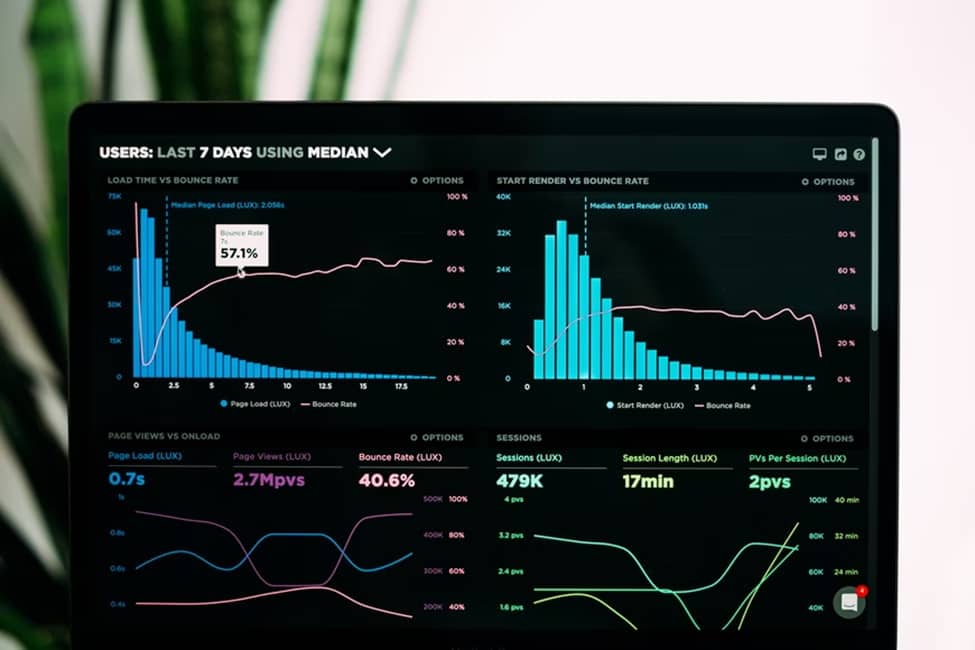Do you want to know more about how UX and SEO are related? In this article, we'll explain how these two affect one another and offer you advice to improve both.
What is UX?
User Experience is defined by The Nielsen Norman Group as: “…all aspects of the end-user’s interaction with the company, its services, and its products.“
The most crucial questions in user experience right now are, however, these: Are your website's visitors lost? Does it work as well as you anticipate? Do clients encounter any difficulties getting the information? Is the layout of your website user-friendly? Or are your information architecture and menus difficult to navigate?
A specialist or online UX research tool can conduct research on all of this and find out what needs to be improved.
What is SEO?
Everyone uses SEO, or search engine optimization, to varying degrees. Setting keywords that correspond to the material displayed on your website or blog is the most fundamental SEO strategy.

This aids Google and other search engines in locating trustworthy sources of information for the search terms people have entered.
Google will eventually locate what you're looking for, whether it's a restaurant near you, the answer to the inquiry "Do hedgehogs sneeze?” or whatever else your search is. However, without the good amount of optimization, your page will get lost in the long list of results. A recent study from Safari Digital SEO found that websites that appear on page two of Google (outside the top 10 search results) garnered less than 1% of total organic search engine clicks – making them all but invisible to prospective visitors.
As a result, you will need to make adjustments depending on algorithms if you wish to rank better. Since most people aren't even aware of the foundations upon which they are constructed, they can be exceedingly difficult to understand. While Google is transparent in some areas, it will never divulge its trade secrets. In light of this, let's attempt to examine certain statistics used by Google that we at least are aware of.
How to make your website better using UX and SEO
Let's now look at some modifications you or UI UX design companies can make to the design, optimization, loading time, and content to help your website and business surpass the competition in the race for Google relatability.
Improve the navigation
The number of pages and subpages in your navigation should be adjusted.
This can aid Google in better analyzing your website, which will result in a rating of highly readable and user-friendly. In addition to assisting with SEO, this will also give your clients more confidence to utilize your website. Learn more about the information architecture of websites and how to organize and classify the content on your website.
Here, tools like card sorting and tree testing might be quite helpful. You may manage subsections, allow people to classify information as they see fit, and do so much more with the assistance of your consumers.
If you’re still unsure if your navigation, structure and labels are user-friendly enough, run a UX survey and find out what users think might need improvement.
Optimize for mobile
Google has pushed websites to become more mobile-friendly since 2015. Why? It seems that mobile devices account for more than half of all searches. Although it may initially seem unlikely, consider how frequently we use our phones. Now that we carry computers everywhere with us, search engines have to update their algorithms significantly.
Google started using the "mobile first" indexing approach in 2019. What that means for you is that Google now ranks your website based on its mobile version rather than its desktop version. This means that if you don't have mobile device optimization, you could be at a significant disadvantage.

With a few tips, your mobile site will rank higher:
- Don’t change the content
Google will make sure that the content is the same on both your desktop and mobile versions. If not, this can indicate that your rank might drop.
- Ensure that Google can access both websites
Some of the content on both sites may be difficult for Google to access and render. Before it's too late, identify the rendering problem's root cause and fix it.
- Use the same content classification and meta tags across both site styles
Make sure the meta tags and H1-H6 classification on both websites match because search engines will consider these factors when determining rankings.
- Match the data
The info on the website ought to be comparable, if not identical.
There is no doubt that Google will render both sites, their data, content, and meta tags, and ensure that they are consistent. Search engines will catch on if there are any inconsistencies, and you can fall in the rankings.
Being mobile-friendly can therefore give you an advantage over your less mobile-friendly rivals.
- Improve mobile usability
Make sure it's simple to navigate on your mobile website. By doing this, you can lower your bounce rate and improve your ranking.
Take care of the loading speed
We all detest staring at a white page for longer than five seconds, right? Google seemed to loathe it even more, though. Since the beginning of time, this has been the case, and the organization has been dealing with slow loading times for many years. Try to make adjustments to your website to reduce the amount of data that the servers must crawl through.
Run the PageSpeed Insights tool on your page first, then try to optimize your pictures, reduce the amount of CSS and JavaScript, and if all else fails, try a different hosting provider.

Manage your content right
Use headers and subheadings to organize any written information on your page so that visitors and crawlers may better understand it.
Search engines utilize crawlers, an automated service, to scan the content of websites. Google and other search engines use this information to rank websites based on the elements we have already stated and will discuss more in this post.
Use H1 (Heading 1) to convey the post's or page's main point. Your information is further categorized using H2-H6. Use H1 alone, and don't mention the same subject more than once. Although H2-H6 can be utilized widely, you'll find that most cases only require one H1 and two or three H2.
Lower the bounce rates
Google takes into account both the length of time spent on your website and its purpose.
Don't believe, though, that adding tons of pointless material to your website will have no impact on its overall score. Spending additional time on your website is simply not worth it because it might lead to your users being lost.
On the other hand, if the time was well spent and Google noticed that your material was properly categorized, this can raise your ranking. Please use it responsibly.
Modern SEO primarily focuses on UX
We'll now examine the modern era of SEO.
Google's Core Web Vitals are those. These updates, which were made in the middle of July 2021, concentrate on the three qualities of a healthy website: interaction, visual stability, and speed at which content loads.
The main goal is to improve the user experience. Let's take a closer look and see what changes you can do to improve the website's user experience and Google ranking.

Largest Contentful Paint (LCP)
This metric describes how long it takes for content to load on a website. In particular, the largest one (be it a picture, video, MP3 file, or other). This must occur within 2.5 seconds of hitting the website link in order to receive a high grade.
First Input Delay (FID)
When to start making your website interactive. How long will it take for the website to begin responding to user input, in other words. Activating a button or hiding a text blip, for instance. It shouldn't take more than 100 ms.
Cumulative Layout Shift (CLS)
All sudden layout changes on the website are tallied by CLS. Google will factor in any text, images, videos, buttons, or other elements that are moved to account for a smaller or larger screen when calculating the final score.
The ideal value would be zero. The time spent working these shifts is also included. Less than 0.1 seconds should pass throughout this.
Speed Index
The time it takes for your website to fully load.
First Contentful Paint (FCP)
The loading time of the initial text, logo, pictures, etc.
Time to Interactive (TTI)
The time it takes for a website to become interactive, such as when you click on a menu item, in addition to loading information.
Time to First Byte (TTFB)
Counting the amount of time it took to respond to the user's HTTP request with the first byte of data. No more than 600ms should pass throughout this.
Check out the 5 Steps You Can (& Should) Take to Improve Your Core Web Vitals Now blog post if you want to make sure your Core Web Vitals are in order and further optimize them.
Improve your product’s UX and outshine your competitors in SEO
You now have all the information necessary to begin considering UX optimization. Not only does it make visitors feel more at home and secure on your website, but Google also takes notice and can give you an edge over your rivals.
Don’t waste your time! Go for that top spot on Google!








